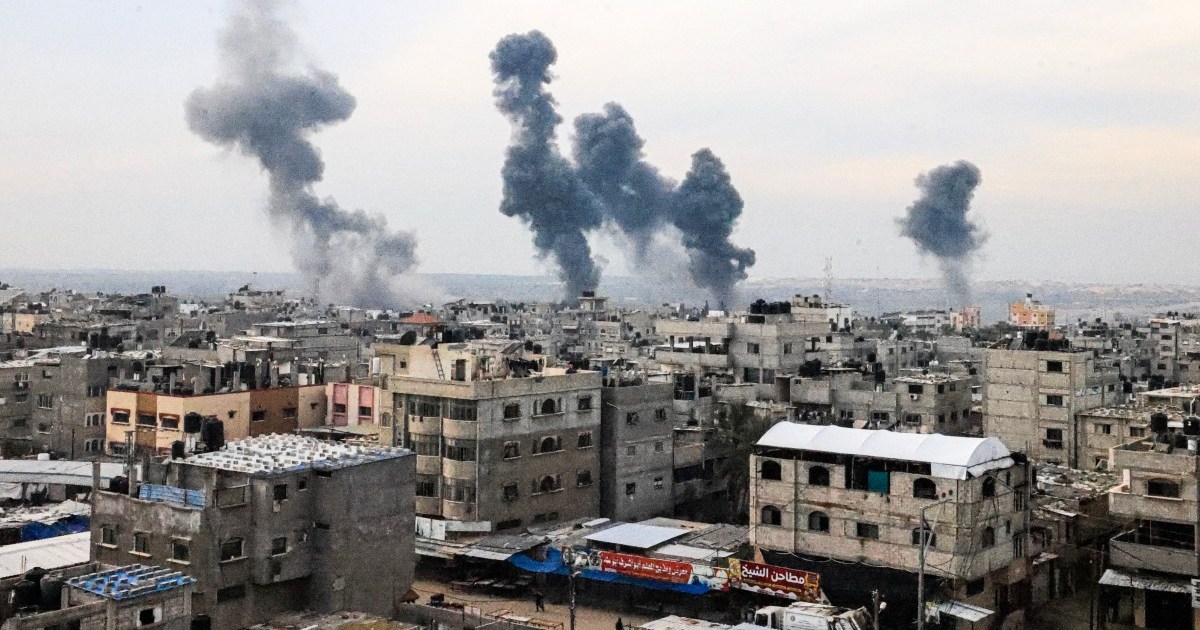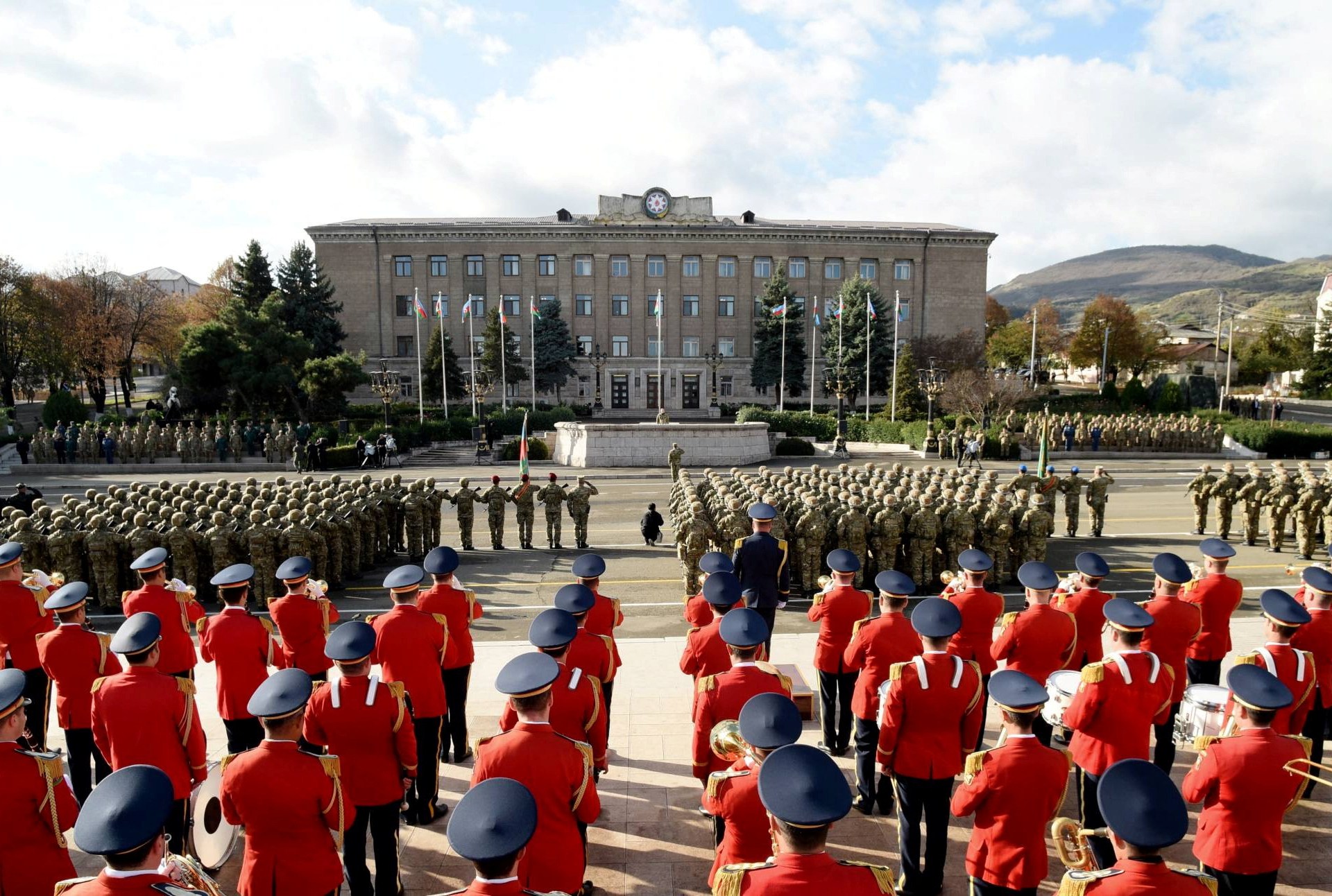
Nearly 23,000 people – the vast majority Palestinians – have been killed since the unprecedented Hamas attacks in southern Israel on October 7 that launched Israel’s assault on Gaza.
As the end of 2023 approaches, the Israeli offensive shows no signs of abating and the death toll is certain to rise on both sides as fighting continues.
Political attempts at peace have failed.
Israel has stated from the outset that its goal is to eliminate Hamas’s military and governance capabilities. To this end, it has continued its airstrikes and ground invasion of the Gaza Strip almost uninterrupted since October 7.
While Israel admits that it has failed so far in this mission, it claims it is only a matter of time before it achieves this goal. But does the situation on the ground support this claim?
The answer is a cautious no.
A detailed and impartial analysis of various aspects of its performance leads to the conclusion that Hamas has experienced more successes than failures so far – for the following reasons.
Hamas still exists
The organization is still very much alive and kicking. Politically, it is still recognized – de facto if not de jure – as the sole entity exercising control over what remains of Gaza’s severely damaged civilian structures.
It is involved in indirect negotiations that have already led to a week-long pause in the attack on Gaza and a limited exchange of Israeli and Palestinian prisoners and hostages. As long as Hamas holds on to its remaining hostages, it will continue to be an inevitable “other side,” without which no release of these prisoners will be possible.
Israel has repeatedly stated that there is “no place” for Hamas in postwar Gaza’s civilian structures, but has never produced any semblance of a concrete alternative plan.
Various vague, non-specific suggestions have been made that Gaza’s future would be better without Hamas, but no one has made a coherent proposal about how to remove Hamas and what to replace it with.
The United States, some Arab states and various international organizations have suggested that a postwar Gaza Strip should be administered by Fatah or a pan-Arab force, but have offered no concrete plans for how this could be achieved. That remains wishful thinking for now. Therefore, Hamas will continue to exist for the foreseeable future.
Hamas remains an effective military power. Hamas’s military wing, the Qassam Brigades, has never publicly released information about its structure, organization or numbers.
Some experts estimate the strength of the Qassam Brigades at 30,000 to 45,000 fighters, using open sources as well as leaked information from Israeli, US, Arab and Russian sources.
Even the most cautious analysts assume that before the war the force had at least 18,000 well-trained, disciplined and ideologically highly motivated first-tier soldiers in its ranks; all soldiers beyond that number were part of the second echelon.
Various Israeli claims of killing up to 10,000 Hamas fighters are almost certainly exaggerated.
The Qassam Brigades have suffered heavy losses, but most of their battalions remain effective fighting units. The Institute for the Study of War, an influential and well-informed US think tank, estimates that of the 26 to 30 fighter battalions believed to have existed on October 7 – each with 400 to 1,000 men – only three were rendered inoperable – or, in civilian parlance, destroyed.
Of the remainder, four or five are “degraded,” meaning that their strength is reduced but they continue to fight, either alone or by joining other units.
In one respect, Hamas’s military wing has proven extremely effective: all units whose commanders were killed continued to fight under their deputies.
Using its excellent field reconnaissance, Israel managed to kill at least five battalion commanders in targeted airstrikes, with at least six others dying in combat, including the commander of the Northern Brigade. However, none of these units became “headless” and collapsed, confirming Hamas’s clear ability to plan and train competent proxies.
Israel has destroyed or blocked tunnel entrances wherever it could find them, but there are clear signs that Hamas still has enough underground facilities to move forces between front lines and often successfully flank and surprise the enemy.
Hamas is supported by other armed factions
Reports from Gaza sometimes give the impression that Hamas’s armed wing, the Qassam Brigades, is doing all the fighting. In fact, there are no fewer than twelve different armed groups belonging to different political and ideological blocs. The second best-known is Islamic Jihad, but the others also include the Popular Resistance Committee and two fronts for the liberation of Palestine with almost the same name – one called “popular”, the other “democratic”.
The Al-Aqsa Martyrs Brigades, the armed wing of its rival Fatah, is probably the least associated with Hamas. However, political differences aside, it fights in coordination with and largely under the general command of the Qassam Brigades.
Bringing all of these groups under the Hamas umbrella is a pragmatic solution born out of necessity, but it appears to be working to the satisfaction of all involved, with no visible tensions or rifts so far.
There are no reliable allegations that any of these numerous smaller units gave in under pressure from the Israeli forces, disbanded, deserted or collaborated with the enemy. In addition, it cannot be ruled out that some of them will join forces, at least temporarily, to form the Kassam Brigades.
The continued coexistence of these armed factions despite the same threat is undoubtedly a success for Hamas.
Hamas has gained popularity in the West Bank
Contrary to the prevailing Israeli and Western image of Hamas as unacceptable terrorists and murderers of innocent civilians – a view particularly reinforced by reports of indiscriminate massacres on October 7 – many Palestinians see this in a different light.
Those who see themselves as victims of Israeli oppression, unequal treatment, lawlessness and discrimination often idolize Hamas as the fearless defender of Palestinians and often as the only group to do so. Many young people born after the Oslo Accords of the 1990s, which were intended to bring about a two-state solution, admit they are frustrated by the Palestinian authorities’ inability to ensure what is needed agreed, promised and signed in these agreements.
This sense of frustration has become particularly strong in the Fatah-run West Bank, seen by many young people as inefficient, corrupt, incapable and uninterested in supporting the Palestinian cause.
The increasing aggression of illegal Israeli settlers, who continue to harass, rob and commit violence against Palestinians in the West Bank with impunity, has further alienated Palestinians.
Many Palestinians in the West Bank responded to the war in Gaza by openly flying Hamas flags, often alongside those of Fatah. Young Palestinians living in the walled and dismembered West Bank have long been angered by the fact that they are passive outsiders constantly subjected to this kind of treatment.
Many have now placed their hopes and expectations on those who stood up, fought back and hit Israel hard, even though Israel is so much stronger.
Although this view defies logic and may seem shocking to outsiders, there is no doubt that it is real.
Even if Israel achieved its goal of “ending” Hamas – a completely unrealistic prospect – many Palestinians would remember Hamas as the only group that refused to sit passively and simply take blow after blow from Israel .
Despite the heavy losses it has suffered and the image it has acquired in the West, Hamas probably has more reason to be happy than to worry.






Recent Comments